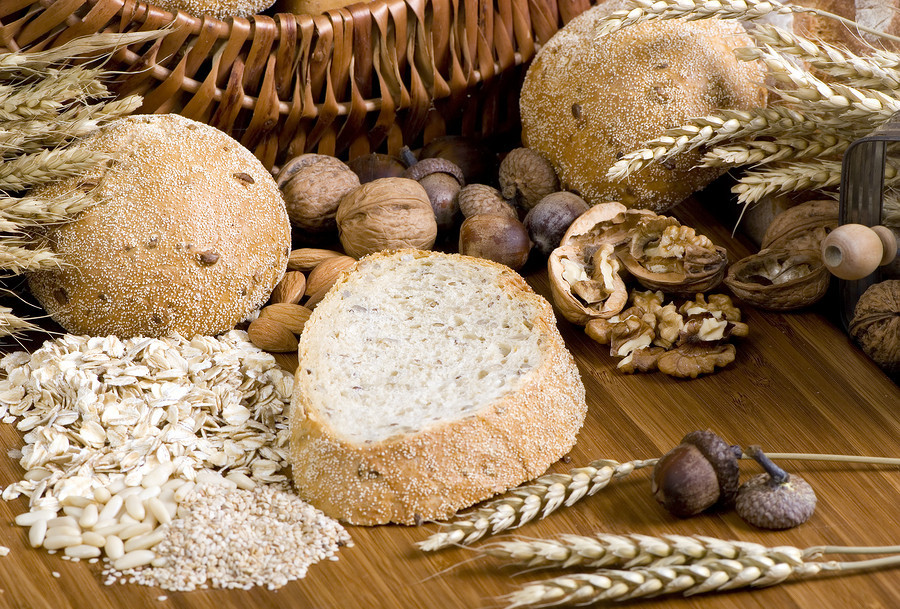Harvard Health Blog
Fiber-full eating for better health and lower cholesterol
- Reviewed by Howard E. LeWine, MD, Chief Medical Editor, Harvard Health Publishing; Editorial Advisory Board Member, Harvard Health Publishing

The American Heart Association and the FDA recommend that we all eat at least 25 grams of dietary fiber per day. But what is it, how do we know how much we're eating, and where did that number come from, anyway?
What are the types of fiber?
Dietary fiber is a good carbohydrate, also known as roughage, found in plant foods (not supplements). There are two kinds, soluble or insoluble, and both are really good for us. Soluble fiber becomes a thick gel in our intestines, which slows digestion (which keeps blood sugars from spiking) and traps fats so they can't all be absorbed (which lowers cholesterol levels). Sources of soluble fiber include oatmeal, beans, lentils, and many fruits. Insoluble fiber helps keep our stools soft and regular, always a good thing! Sources of insoluble fiber include whole grains, beans, lentils, and most vegetables. Both soluble and insoluble fiber make us feel full, which helps us to eat less.
Why is fiber so good for us?
But fiber does so, so much more. In a recent research study published in The Lancet, investigators pooled the results from 243 studies looking at health effects of dietary fiber. They excluded any studies about fiber supplements — this was all about fiber from food. They ended up with data from over 4,600 people, and found a very strong relationship between higher dietary fiber intake and better health outcomes. Basically, intake of at least 25 grams of food fiber a day is associated with a lower weight, blood pressure, blood sugars, cholesterol, as well as lower risk of developing (or dying from) diabetes, heart disease, strokes, and breast or colon cancer. Study results were extremely consistent, and the dose-response curve was very linear, meaning the more fiber, the better the outcomes. This makes us believe the results are very real and not due to some other factor related to study participants' diet or lifestyle.
Consuming good carbs means more daily fiber
Unfortunately, most of us are consuming fewer than 20 grams of fiber per day. I know many people who shy away from the carbs in whole grains, beans, and fruit, thus missing out on all that healthy fiber. But here's the deal: there's good carbs and bad carbs, and whole grains, beans, and vegetables are all good, folks. It's the quality of the carb that counts. Worried about gassy effects? In the short term, start low and use simethicone (a common, gentle anti-gas medication) as needed. Your body will become accustomed over time, and the effects will diminish.
Fiber-packed meals are easy
Let's put together a very simple yet flexible meal using boiled red lentils, store-bought or homemade hummus, whole-wheat wraps, and a simple salad made with mixed greens, tomatoes, and cucumbers dressed with only lemon juice and olive oil. This meal is so easy and healthy, and it can be served to guests or packed up for lunch at the work desk. This meal has half the recommended daily fiber and almost 20 grams of protein, plus calcium, iron, and potassium.
Mediterranean-Style Heart-Healthy High-Fiber Buffet

Many of these ingredients can be purchased inexpensively or prepared super-quickly, and no one will know you weren't cooking all day.
Cooked and seasoned red lentils (1 cup raw lentils to 3 cups water, bring to a boil and simmer for 15 minutes, then sprinkle with sea salt and lemon juice. Add chopped fresh herbs too, if you like. Serve hot or cold.)
Very simple salad (mixed greens, sliced cherry tomatoes, and chopped cucumber, dressed in extra virgin olive oil, lemon juice, sea salt, and black pepper. Toss it all up and serve.)
1 container hummus (or you can make your own)
Whole-wheat wraps
Optional: kalamata olives, artichoke hearts, sundried tomatoes, baba ganouj, or other Mediterranean goodies, low-salt versions preferred.
There are many resources available to guide you on healthy high-fiber food choices. Basically, consuming fruits, veggies, beans and legumes, and nuts and seeds regularly will ensure that you get at least 25 grams of fiber every day!
Adapted from a Harvard Health Blog post by Monique Tello, MD, MPH.
About the Author

Harvard Health Publishing Staff
About the Reviewer

Howard E. LeWine, MD, Chief Medical Editor, Harvard Health Publishing; Editorial Advisory Board Member, Harvard Health Publishing
Disclaimer:
As a service to our readers, Harvard Health Publishing provides access to our library of archived content. Please note the date of last review or update on all articles.
No content on this site, regardless of date, should ever be used as a substitute for direct medical advice from your doctor or other qualified clinician.















